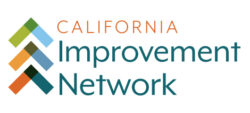[ad_1]
Reflecting the substantial cost of health insurance, health-inclusive poverty thresholds are on average about 60 percent higher than CPM thresholds, although household composition makes a difference. Because we scale health insurance need both by age (e.g., it is cheaper to cover children than adults) and by household size (e.g., two-person coverage costs twice as much as single-person coverage), the differential is greater for households with older adults or seniors and for larger households.
The cost of living varies considerably across California’s diverse regions, and the CPM adopts the national SPM framework, which factors the varying cost of housing into poverty thresholds. Similarly, the health-inclusive framework allows us to capture geographic differences in the cost of health insurance. Health care costs are lower, on average, in Southern California and higher in the Bay Area and northern parts of the state, which are reflected in the premium costs for health insurance plans available from Covered California. This regional variation is incorporated into our health-inclusive poverty thresholds.
Across the state, the annual amount required to meet the basic needs of a family of two adults with children is about $53,000—about $17,000 of which is related to health insurance coverage (Technical Appendix Table B6). However, there are relatively large differences across California. Counties in the Central Valley have considerably lower health-inclusive poverty thresholds (around $45,000) compared to some counties in the Bay Area such as San Mateo or Santa Clara, where the resources needed to make ends meet add up to around $70,000. While much of this variation is driven by differences in housing-related costs, health insurance costs also contribute to regional variation.
Current subsidy structures and public coverage through Medi-Cal insulate many low-income (and some middle-income) individuals from sizable cost differences across regions, but these differences have implications for state and federal spending. The federal government provides the majority of Medi-Cal funding, and about nine in ten Covered California enrollees rely on federal subsidies. The state plans to continue additional subsidies for middle-income families and some federal subsidies are temporary, so it is important for state decision-makers to be able to track this variation.
Uninsured Californians Are Twice as Likely to Live in Poverty
The health-inclusive CPM paints a particularly stark picture for Californians who continue to lack comprehensive health coverage. Poverty rates for the uninsured are more than double the rates for low-income families with Medi-Cal coverage (Figure 1). To be sure, poverty varies widely among those who are insured: rates range from 4.2 percent among Californians with employer-based insurance, to 15.6 percent among those who purchase insurance through Covered California, to 18.5 percent among those with Medi-Cal. We would expect poverty rates to be higher among those with Medi-Cal coverage, since the program serves Californians with low incomes. However, variation in poverty rates is also driven by other factors, including employment opportunities and barriers, housing costs, and access to social safety net programs.
[ad_2]
Source link


